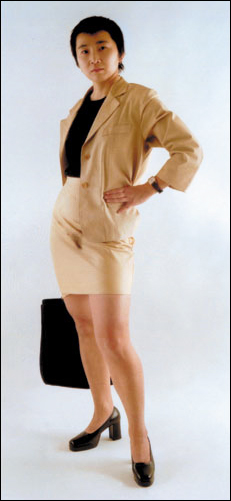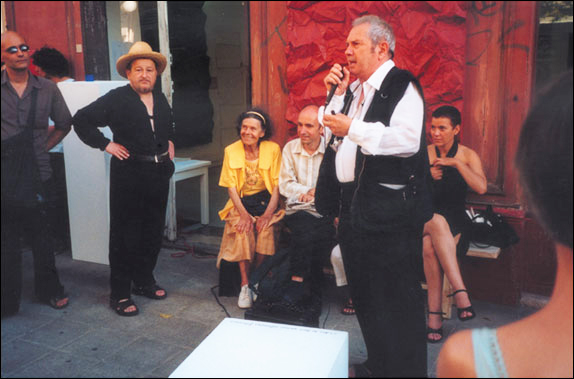Reinventing the Riviera
One of the first things to strike a newcomer to the city of Nice in addition to a limpid turquoise coastline, belle epoque architecture,19th century casinos, handsome prostitutes, and delectable cuisine, is the Gallic fascination with contemporary art. Erudite lectures on Marcel Duchamp fill the airwaves at 2:00 A.M. and both city and state agencies furnish emerging artists with studio spaces in converted factory and warehouse buildings. Better still the FRAC (Fonds Regional d’Art Contemporain) buys their work. The city of Nice has a museum of modern and contemporary art that soars into the sky, faced with seemingly endless revetment of Carrara marble and smoked glass. In addition to its permanent galleries dedicated to Nouveau Réalisme, native son Yves Klein, and Pop Art, the museum features world class international programming. The museum also highlights the work of artists with southern French ties such as Ben Vautier and Bernar Venet, and exhibits work by emerging artists from Nice. During my time there, I paid studio visits to four Nice-based artists which proved most rewarding.

Junko Yamasaki
Junko Yamasaki explores issues of cultural identity, geographical relationships, and erotic sensuality. Her work is informed by Eastern philosophy, the traditional arts of Japan (she studied the tea ceremony in Kyoto for five years) and issues in contemporary art. A recent body of digitally altered photographs unites dual photographs of different neighborhoods, cities, and even countries into a single image. Demarcations are blended to an effect which often underscores their physical similarities. Yamasaki also produces three-dimensional topographical maps of continents and reconfigures their cardinal points of north, south, east, and west. Some of her most interesting work involves the use of body and particularly pubic hair. In the tradition of painting the female nude, artists have often neglected to paint pubic hair. One theory for this omission is that hair represents power, as in the biblical story of Samson and Delilah. Female nudes were painted as passive subjects for the male gaze. Yamasaki recaptures this power by placing pubic hair on the surface of both male and female garments. She also creates shirts and neckties that have sprouted body hair. In so doing, she intensifies the primal, sexually charged nature of all human interaction.

Stéphane Steiner
Stéphane Steiner has embarked on a new series of paintings derived from the work of Vincent Van Gogh. They are painted on etched zinc panels with yellow paint in heavy impasto. Steiner has left perfect circles of differing dimensions unpainted and the deep trails of impasto follow circular contours much as they might a moon or a sunflower. But these rondels are different. Etched into the metal are Steiner’s interpretations of 19th century graffiti. They include prosaic assertions of ego, such as the way a French Dragoon might have carved his name into a tree. Into other rondels are etched names and drawings of places, and the zinc circles are polished and reflective like mirrors. Steiner’s work reinterprets the myth of tortured genius, which surrounds Van Gogh, by associating his inspiration with simple recollections of people and places he encountered in life.

Nadine Spinoza
In her recent work, Nadine Spinoza has chosen to interpret one of the cornerstones of Western art and architecture: the cube. Unlike Robert Smithson and Yayoi Kusama, who have also worked with mirrored cubes, Spinoza approaches the structure as a container of movement. For a forthcoming exhibition at the Galerie Depardieu in Nice, she will create two six by six foot cubes, the interiors of which will be covered with smaller mirrored tesserae. As a result, any movement within will be projected to infinity between the myriad reflective surfaces. In collaboration with a contemporary dance troupe, Spinoza will choreograph movements for dancers within the cubes. Gallery visitors will view the dances or parts thereof through a crescent-shaped fissure in each cube. Another Spinoza project involves an approximately two foot by two foot cube which is faced on all four sides with reflective mirrors. Spinoza places this cube in landscapes and recently sited it amongst rocks on the seashore. By the sea, it reflected certain surrounding rocks, camouflaging itself while playfully bouncing light onto other rocks, to create an intriguing dialogue between light and structure.

Ben Vautier
While walking with a friend near the Museum of Contemporary Art, we came upon the vitriolic enfant terrible of Nice Ben Vautier. Vautier was standing outside of a gallery, microphone in hand, decrying the omission of certain artists (including himself) from an exhibition currently on view at the museum. Beside him was an easel with paper on which he rated artists in the exhibition, soliciting votes from members of his audience. As he spoke, a substantial number of passersby were interested enough to stop what they were doing and gather around to listen. Vautier would briefly share the microphone with others as he delivered combative, impassioned oratory, debunking or affirming the validity of other artists. The next day we visited Ben’s home studio in the hills of Nice. Upon entering Ben’s gate, we walked along a grassy embankment planted with defunct television sets and natural agave plants or cacti. Further along was his Traveling Psychoanalyst trailer in which visitors are invited to tell Ben everything about their personal lives. Then we were confronted with the home, a 19th century villa entirely festooned with text works by Vautier and objects. The result is like a vast assemblage painting. Pithy phrases like, “Words are life,” “To each is life, to each his words,” or “It is courage that counts,” are painted on colorful panels that adorn the facade. The panels intermingle with precarious found objects such as mannequins, tires, masks, and clocks, some of which dangle in front of the house, suspended by a complex system of rigging. Vautier had business to discuss with my friend, but when he discovered that I am American he addressed me in English he had learned from his Irish mother. Ben spoke of the Fluxus movement and his memories of George Brecht and George Maciunas. He was less boisterous than in the public square but no less opinionated. Like the city of Nice itself, Ben is complex, seductive, at times off-putting, but always interesting.

Thanks to Christian Depardieu, Hélène Jourdan-Gassin and Enrico Pedrini.
© 2004 Daniel Rothbart. All rights reserved.